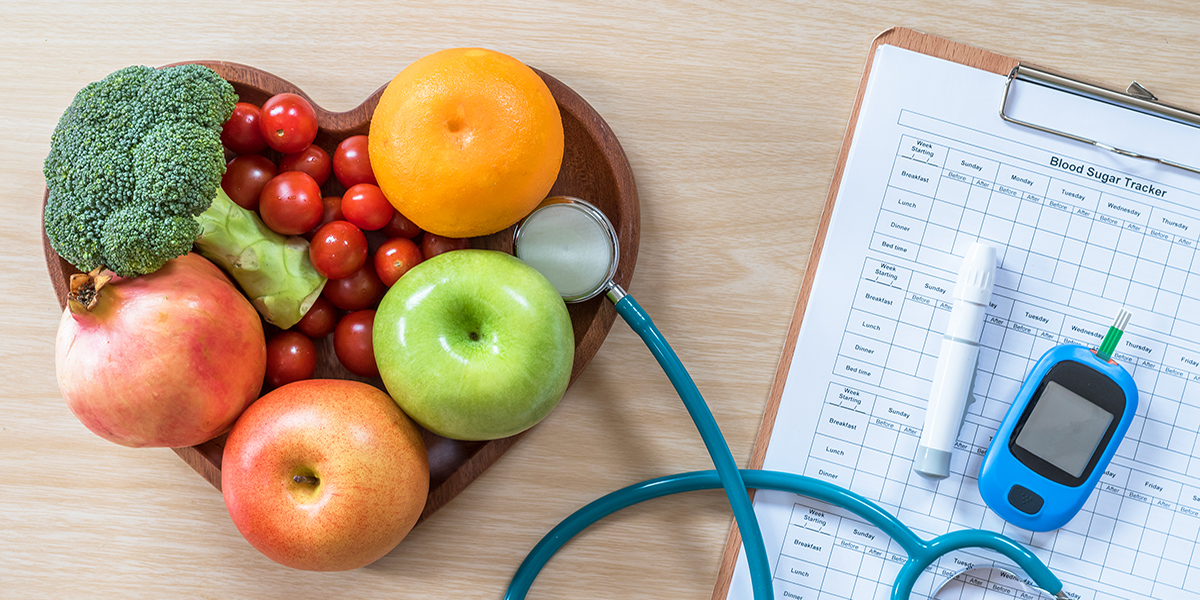What is Diabetes?
Different foods have different amounts of carbohydrates, which get converted to energy fuel, glucose. The blood carries glucose to cells, which is used as an energy source. Insulin, a hormone produced by the pancreas, is required for glucose to enter cells. Thus, the pancreas plays a vital role in the body’s ability to digest food and regulate blood sugar levels.
So, what is diabetes? Diabetes, also known as diabetes mellitus, is a chronic condition where a person’s blood glucose levels are high.
If a person has diabetes, glucose enters the cells more slowly. Thus, it accumulates in the blood, especially after eating, leading to a condition known as hyperglycemia. As a result of hyperglycemia, an individual can experience fatigue, hunger, thirst, and frequent urination, and can lead to complications such as unexpected weight loss and blurry vision.
Types of Diabetes
Diabetes is classified broadly into two types: Type 1 and Type 2.
What is diabetes type 1?
This is a condition in which the body does not produce insulin or has too little insulin. Type 1 diabetes may be caused due to various reasons, including genetics and some viruses. Although type 1 diabetes often manifests in infants or adolescents, it can manifest in adulthood too. There is no cure for type 1 diabetes. Treatment emphasises controlling glucose levels in the blood with insulin, food, and lifestyle changes.
What is diabetes type 2?
This is also called non-insulin-dependent or adult-onset diabetes and is a chronic condition in which the pancreas either does not generate enough insulin or the cells do not respond properly to insulin. Because of these two factors, there is insufficient insulin to transport glucose from the blood into the cells. When glucose accumulates in the blood rather than entering cells, the body’s cells cannot function efficiently.
Tips to Manage Diabetes
Dealing with diabetes can be challenging. However, diabetes can be managed with exercise, a balanced diet and prescribed medications. Here are some tips for managing the health condition:
- Having your regular tests done is crucial to find out if you have high blood sugar.
- The most important thing is to exercise. Even 30 minutes of daily walking, indoors or outdoors, would benefit your overall well-being.
- Eat more fresh fruits and vegetables as part of your diet. Avoid processed meals and diets rich in carbohydrates. The key is to consume more fibrous foods.
- It is crucial to monitor blood sugar levels and comprehend them.
- Depending on the type of diabetes, insulin and oral drugs are prescribed; take them regularly or as advised.
- Regular medical advice from your doctor is a must.
Random Blood Sugar Test (RBS)
This test measures a person’s blood sugar at the time they are tested. One can take a random blood sugar test, and there is no need to fast. Different people react differently to the same foods. Diabetes and prediabetes patients’ glucose levels might fluctuate dramatically during the day. Diabetes patients should use a blood glucose meter to check their random blood sugar multiple times daily to ensure that their levels are neither too high nor too low. It can help determine how well the condition is being managed.
Glucose levels are measured by random blood glucose testing, often known as a random blood sugar test. A random blood sugar test is performed to monitor blood sugar levels at different intervals of the day. The normal outcome is determined by when a person last ate. Blood sugar levels at random typically range between 80 and 140 mg/dL. 140-199 mg/dL shows prediabetes, and diabetes is defined as 200 mg/dL or more.
What is the Purpose of Random Tests?
The RBS test is used to confirm diabetes, track its course, and evaluate disease management. This test can also help diabetic patients who require insulin therapy immediately.
Is It Possible to Cure Diabetes?
The glucose levels of patients can be returned to pre-diabetes or non-diabetes levels (full remission) or non-diabetes levels (partial remission). People with type 2 diabetes can achieve remission by reducing a significant amount of weight. We use the term “remission” rather than “cure” since it is not typically permanent.
Conclusion
Diabetes today is much more common than before and therefore you shouldn’t think you’re alone. You can manage it by simply eating healthily, exercising regularly, and reducing weight. Remember that having diabetes doesn’t define you or make you any different from anyone else.
People can live healthy lives if they receive appropriate care and treatment. You can improve your health and reverse diabetes by continuously monitoring your blood glucose levels, changing your lifestyle habits, and exercising. Our website, sugar.fit, has a wealth of resources for people with diabetes.

Leave a Reply